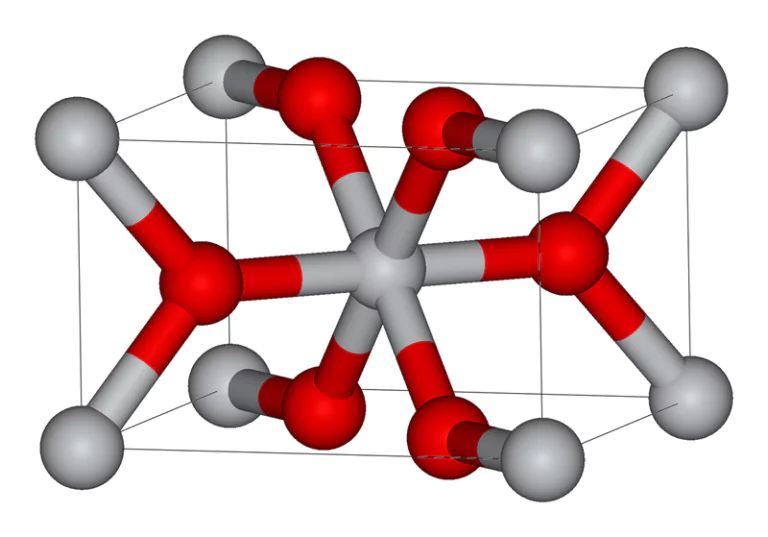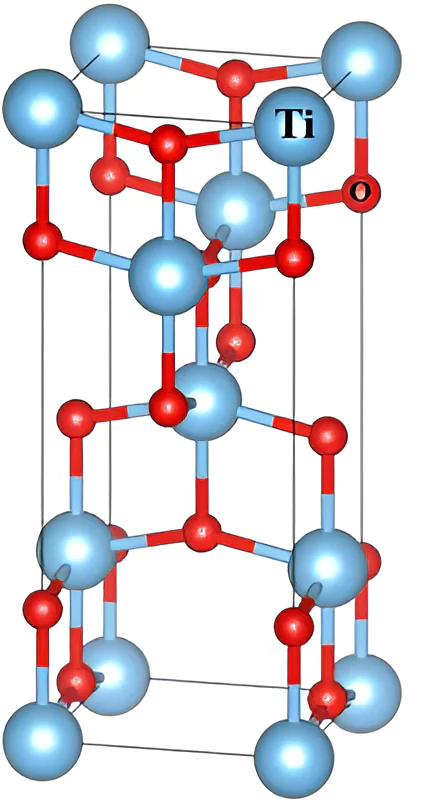
Titanium Dioxide in Paints
Titanium Dioxide in paint plays a vital role as a synthetic white pigment widely used in paints and coatings. With high hiding power, it provides maximum whiteness and opacity. TiO₂ efficiently scatters visible light due to its high refractive index, making it indispensable for achieving quality and performance in architectural coatings, automotive finishes, and other applications. Its ability to mask or hide the substrate underneath ensures excellent coverage and brightness, making it a key ingredient for almost a century.
Applications

Silicone Paints

UV Coating

Silicate Paints

Powder Coatings

Emulsion Paints

Can Coatings

Industrial Coatings

Architectural Paints
Why is titanium oxide used in paint?
Titanium Dioxide in paints is an inorganic compound used as a white pigment. It provides whiteness, brightness, and opacity in the industry because of its high opacity and brightness. It has great hiding power, UV resistance, and durability, which improves the paint’s ability to cover surfaces evenly and protect them from weathering.

Titanium Dioxide Powder for Paint
Titanium oxide powder is essential in paint because of its high opacity and brightness. It has good hiding power, ensuring equal coverage with few coats. TiO₂ enhances paint durability by providing UV resistance, preventing fading and deterioration over time. Furthermore, it improves the paint’s whiteness and color vitality, making it suitable for both protective and decorative applications. TiO₂’s tiny particle size and high refractive index make it the most effective white pigment, offering outstanding performance in a wide range of paint applications. Some characteristics that Titanium Dioxide for paint are given below:
High Hiding Power
- TiO₂ offers exceptional hiding power, allowing it to conceal the underlying surface effectively.
- This property ensures that the paint achieves the desired opacity and coverage.
Whiteness and Brightness
- As a fine white powder, TiO₂ imparts maximum whiteness to paints and coatings.
- Its brightness enhances the overall appearance of surfaces.
UV Protection and Durability
- As TiO₂ absorbs UV light, the underlying molecules of resin remain protected from UV damage.
- Its presence enhances the weather resistance of coatings, ensuring longevity.
Scattering of Visible Light
- TiO₂ efficiently scatters visible light due to its high refractive index.
- This scattering effect contributes to the reflective and bright nature of coated surfaces.

Selecting the Correct TiO2 Grade for Your Paints & Coatings
Selecting the correct grade of Titanium Dioxide in paints and coatings is crucial for achieving desired performance characteristics. Different grades offer varying properties, affecting color, durability, and application efficiency. Let’s explore how to make an informed decision:
Opacity and Hiding Power
One of the primary uses of TiO2 in paints and coatings is to give opacity and hiding power. TiO2 has a much higher refractive index than most other materials, which allows it to scatter light effectively. This scattering of light is what gives a paint its opaqueness, allowing it to completely cover its base even with a thin coating. TiO2’s high refractive index allows it to achieve this with less pigment than other compounds, making it an efficient choice for paint makers.
Brightness and Whiteness
TiO2 is well-known for providing a shining white color to paints and coatings. This brightness is due to its capacity to reflect a significant amount of visible light. High-purity TiO2 has a highly clean, white appearance that improves the overall look of the coated surface. This feature is especially significant for applications that demand excellent aesthetic quality, such as interior wall paints, automobile coatings, and decorative finishes.
Choosing TiO2 Grade Based on Application
- Interior Paints: Prioritize brightness and whiteness. Anatase TiO2 may be suitable, but rutile with suitable surface treatments can also be used.
- Exterior Paints: Require high durability and weather resistance. Rutile TiO2 with inorganic surface treatments is ideal.
- Industrial Coatings: Depending on the specific requirements (e.g., chemical resistance, mechanical properties), choose rutile
TiO2 with appropriate surface treatments. - Specialty Coatings: For applications requiring specific properties like UV protection or high reflectivity, select TiO2 with tailored surface treatments.
Types of Tio2 for Paints and Coatings
There are two major forms of TiO2 used in paint and coating formulations:

Rutile TiO2

Anatase TiO2
Rutile Titanium Dioxide For Paint
Rutile TiO2 is the most stable form, known for its superior opacity, durability, and weather resistance. Its dense, tightly packed particles enhance performance in coatings, especially for external applications needing high resistance to weathering and UV radiation. With excellent hiding power, it preserves color and coating integrity over time, making it perfect for architectural, automotive, and marine coatings.
Anatase Titanium Dioxide For Paint
Anatase TiO2, with its larger surface area and lower density compared to rutile, offers superior brightness and whiteness. However, it’s less durable and more susceptible to UV degradation, making it suitable for indoor applications where weather resistance is less crucial. Valued for its ability to deliver a brilliant white hue, anatase TiO2 is commonly found in interior paints, decorative coatings, and specialized applications like cosmetics and paper coating.
How to optimize the use of titanium dioxide in Paint
Effective Dispersion of TiO₂ Particles
To maximize the efficiency of TiO₂ pigments, it is crucial to ensure that each primary particle is fully utilized. The optimal scattering of light by TiO₂ particles occurs when they are well-dispersed, with individual particles separated and evenly distributed within the system.
The Dispersion Challenge: Separation and Stabilization
A major challenge in the dispersion process is that TiO₂ particles have a strong tendency to attract one another. This has two key implications:
Separation:
- Significant effort is required to separate these particles during dispersion.
- High-energy dispersion equipment is typically used for this purpose, such as:
1. Disk dispersers (dissolvers)
2. Pearl millsWhile disk dispersers can provide initial dispersion, the shear forces they generate are often insufficient to fully separate all primary pigment particles. More complete separation is generally achieved with a pearl mill, which applies higher shear forces.
Stabilization:
- Once separated, the particles need to be stabilized to prevent them from re-agglomerating, a process known as flocculation.
- Stabilization is achieved by adsorbing a stabilizer, or dispersant, onto the surface of the particles immediately after they are separated.
The dispersant works by ensuring that particles repel each other, maintaining separation. This can be achieved through two mechanisms:
- Electrostatic stabilization: All particles acquire the same electrostatic charge, causing mutual repulsion.
- Steric stabilization: Polymeric tails on the dispersant molecules dissolve in the surrounding liquid, creating a barrier that prevents the particles from coming back together.
Distributing the Particles
The ultimate goal is to distribute the stabilized TiO₂ particles evenly throughout the system. Optimal scattering efficiency is achieved when these particles are not only separated and stabilized but also spaced adequately within the medium.

Particles Distribution
Spacing:
- Ensuring adequate spacing between TiO₂ particles is essential. This can be achieved by combining TiO₂ with filler particles of a comparable size.
- Filler particles do not scatter light but help maintain the separation of TiO₂ particles, preventing crowding.
- Crowding occurs when filler particles are significantly larger than TiO₂ particles, leading to undesired clumping of TiO₂.
By carefully selecting filler particles that match the size of TiO₂ particles and adjusting their dosage, one can achieve optimum whiteness and hiding power of the TiO₂ pigment.
Safety Considerations
Safety regarding TiO2 in paints and coatings is paramount for human health and the environment. Inhalation of TiO2 particles, especially in fine form during manufacturing or application, is a concern, requiring proper ventilation and protective gear. Though TiO2 isn’t carcinogenic, concerns exist about potential free radical generation, especially in nano-sized particles, prompting surface treatments for mitigating photocatalytic activity. Disposal must adhere to regulations to prevent environmental harm. With appropriate safety measures and regulatory compliance, TiO2 in paints and coatings can be safely utilized, minimizing risks.
Conclusion
In the world of coatings, TiO₂ stands as a ubiquitous white pigment. Its primary role lies in providing brightness and opacity, while also contributing to the durability of exterior paints. However, the effectiveness of TiO₂ hinges on specific formulation factors and the paint-making process. Understanding the physics of light scattering is crucial for maximizing its brightening and opacifying properties.
Additionally, TiO₂’s ability to absorb UV light shields underlying resins from harmful radiation. While it enhances durability, formulating chemists should take steps to mitigate radical formation at the TiO₂/resin interface. By optimizing these properties, we can harness the full potential of TiO₂ in creating high-quality, long-lasting coatings.
Sukhmani Impex offers a comprehensive selection of TiO2 grades tailored for diverse paints and coatings applications. Their commitment to quality and consistency ensures exceptional performance in your printing processes.

